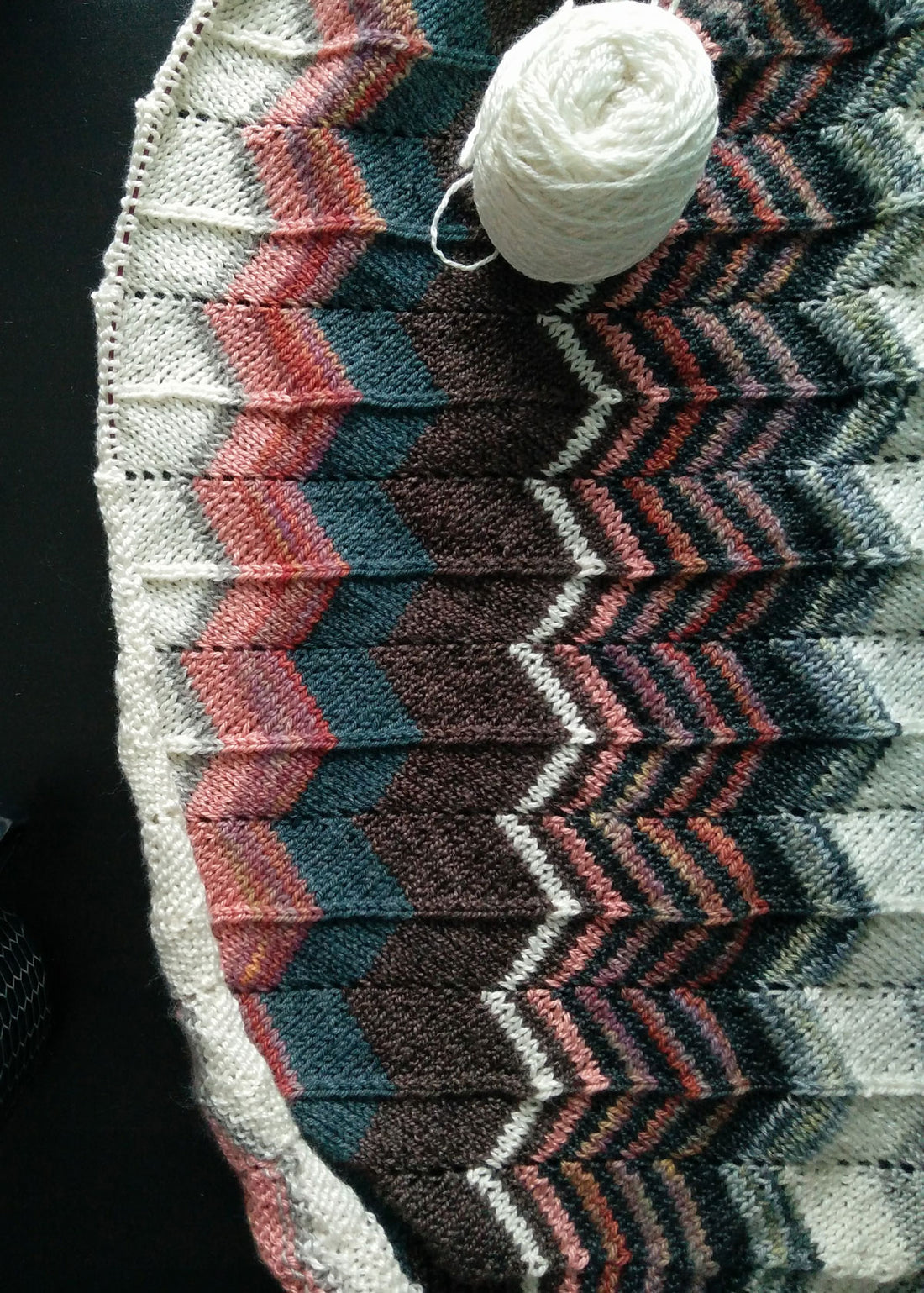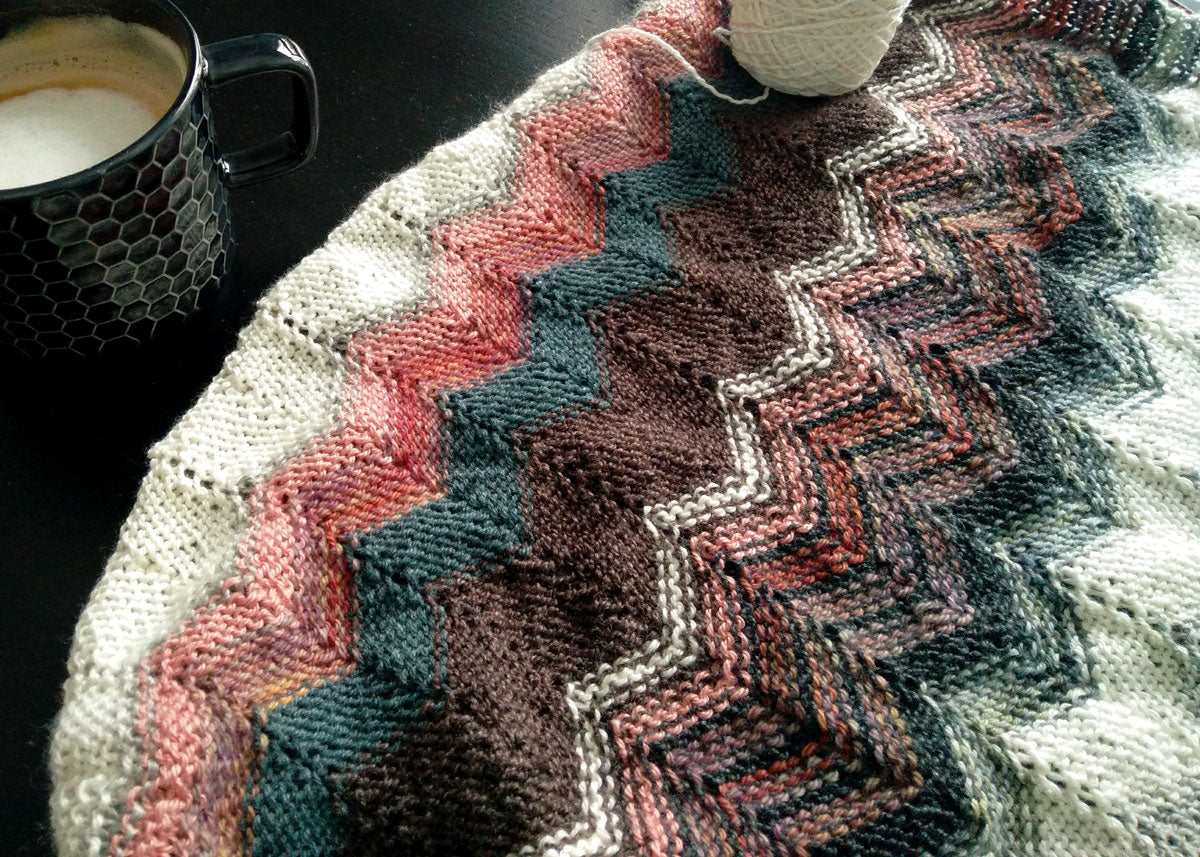I'm feeling determined to make some kind of dent in the stash.
So many beautiful skeins and partial skeins, languishing in the cupboard.
I love the idea of stripes of course. But... I wanted something a little more eye-catching than plain stripes.
So I turned my eye to chevron patterns.
My favourite knitted chevron uses increases and decreases.
If you put a decrease right next to an increase (say, yarn-over, knit 2 together), you get a little bit of texture or a hole. The closer the decrease is to the increase, the less interrupted the row of stitches will appear.
But if you put a decrease and an increase far apart, you interrupt the row of stitches.
Here's what's happening:
When you decrease (by knitting two or three together) you pull stitches together. This means that you force the stitches to lean one way or another towards the decrease. (Picture a row of books on a book shelf: you remove a big fat book from the middle, and the books to the left or right lean towards the void.)
When you increase (by a lifted increase or a yarn over) you push stitches apart. This means that force the stitches to lean away from the increase.
So wave patterns or chevron patterns can be made by forcing stitches to lean this way and that.
I wanted a chevron pattern that wasn't too wide. I'm fond of the proportions in a Missoni scarf, where the zig zags are fairly close together.
I'm using fingering and heavy fingering yarns. 4.0mm needles.
Chevron wrap pattern
Cast on 131 (this is a multiple of 15 plus 1 for the chevron plus 10 stitches for the garter stitch edge). You could make this narrower or wider by increasing or decreasing the cast on in multiples of 15. So any of these cast on's would work: 86, 101, 116, 131, 146, 161, 176, 191.
(I don't know the gauge, but I do know that I like a wide scarf, and in fingering weight, on big needles, about 120 stitches works.)
Row 1 (right side): Knit 5 (that's the edge), knit 2 together, *knit 6, make 2 (this means knit 2 into the strand between the needles, here's a good video tutorial at New Stitch a Day), knit 6, center double decrease (this means slip 2 as if to knit 2 together, knit 1, slip the first 2 over the one just knitted); repeat from the *, stopping when you have 7 stitches left, finish the row with a ssk and knit 5 (that's the other edge).
Row 2 (wrong side): Knit 5 (edge), purl until you have 5 stitches left, knit 5 (other edge).
Repeat Rows 1 and 2. Switch colours whenever you feel like it. You can avoid having a lot of ends by weaving them in as you join new colours.

